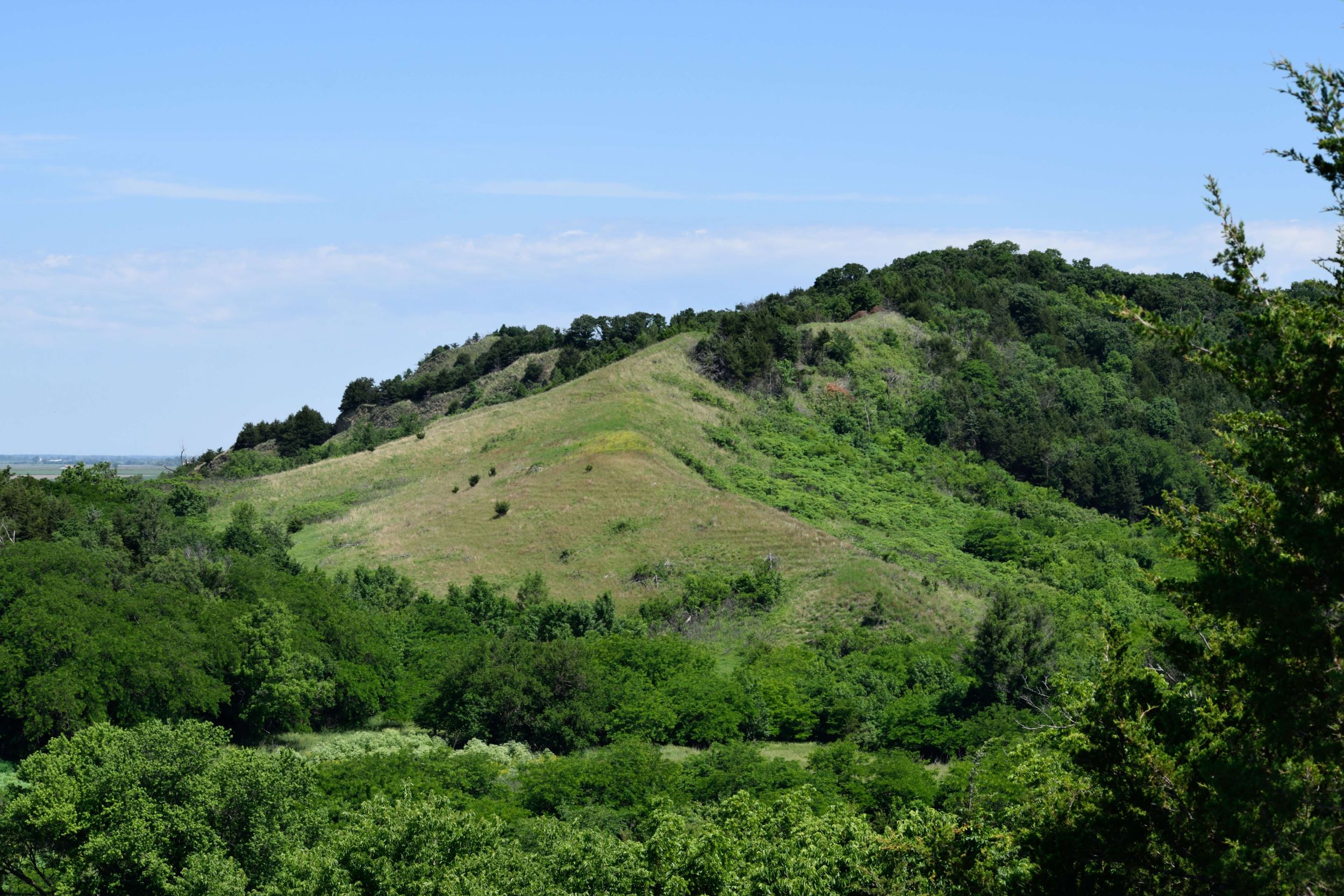Protecting Biscuitroot Bluff
By Mary Runkel on May 16, 2018 in Landowner Stories

Even from the road, it’s easy to see the steep ridges with tentacle-like arms that make up Biscuitroot Bluff. Along the Loess Hills Scenic Byway, the Fremont county property is an excellent example of two Loess Hills landscapes: steep, open prairie and mature oak woodland. It’s also one of three areas in the state where Biscuitroot can be found, a plant with natural and historical significance and the namesake of the now public area.
Rosie Hall sold Biscuitroot Bluff to Iowa Natural Heritage Foundation in 2015, donating a portion of the land’s value to ensure its protection. Hall was prompted to do so after an alarming hospitalization left her eager to honor the wishes of her late husband, Phil.
“My husband was a great conservationist,” Hall said, “Before he left us, he asked me to try and protect at least the part of the land with the Biscuitroot on it — to take care of it if I could.”
She originally thought the donation would be about 10 acres — to protect the sensitive area where the Biscuitroot was found. But after connecting with Tim Sproul, INHF Loess Hills land conservation consultant, she decided to sell all 159 acres of her and Phil’s land. In 2017, the property was transferred to the Iowa Department of Natural Resources, thanks to a REAP Open Spaces grant. The Iowa DNR will own and manage it long-term.
“The integrity of this place, including the Biscuitroot, will be protected forever,” Sproul said. Rosie is happy that people will get to enjoy the area.
“Biscuitroot Bluff is a showcase example of the great story of Iowa’s natural history and is the kind of special area that the REAP Open Spaces Program was designed to protect,” said Heather Jobst, INHF senior land conservation director.
Biscuitroot Bluff is located within the 4,249-acre Waubonsie Special Landscape Area and is identified as a high priority area for protection by the National Park Service. It’s home to several plant species of special concern and offers 360 degree views of the surrounding Loess Hills landscape. “You don’t have to be an expert to notice its vast bluffs and unique ‘peak and saddle’ topography, even from a distance,” said Sproul.
The land is culturally significant as well. Biscuitroot was one of the most important items of trade between the Native Americans and Lewis and Clark on their expedition. Biscuitroot was peeled, dried and ground to create a flour that was pressed into cakes that “tasted of stale biscuits”. Biscuitroot, now a state endangered species, provides a special connection to Iowa’s natural and cultural heritage.